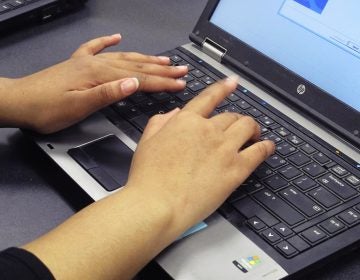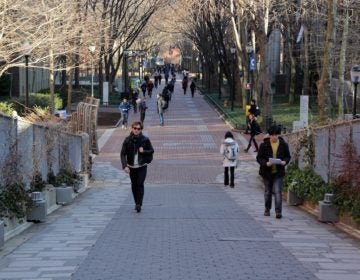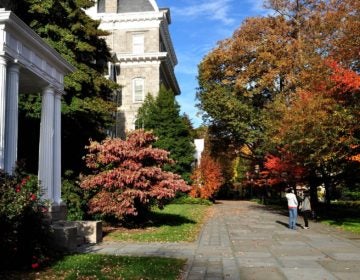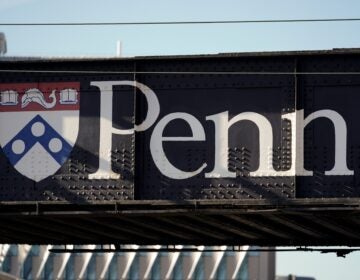Pa. borrowers receive $45.1 million in student loan forgiveness under Biden administration’s SAVE plan
Philadelphia City Councilmember-At-Large Katherine Gilmore Richardson said that the SAVE plan effectively wiped out her remaining student debt in October.
Listen 1:39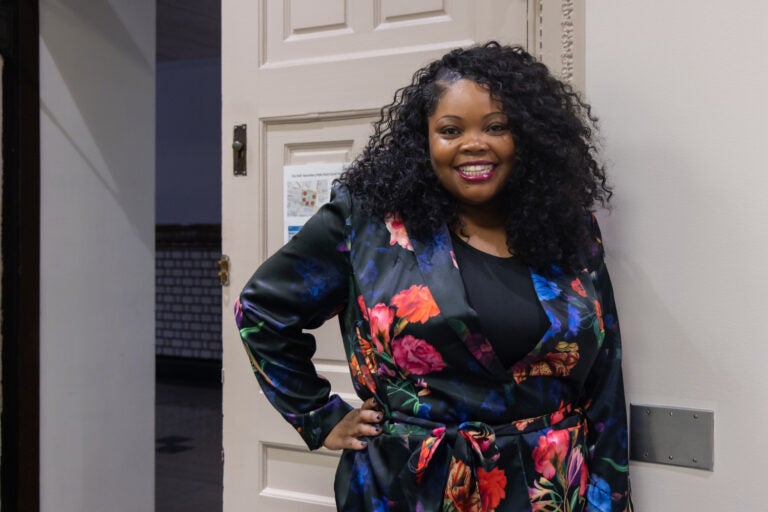
Philadelphia Councilmember At-large Katherine Gilmore Richardson inside City Hall. (Kimberly Paynter/WHYY)
From Philly and the Pa. suburbs to South Jersey and Delaware, what would you like WHYY News to cover? Let us know!
The Biden-Harris administration just waved goodbye to $1.2 billion in student loan debt for a whopping 153,000 borrowers all over the country. Those lucky enough to get approved got the news in their inbox last month, and now the loan servicers are getting ready to wipe out those balances in the coming weeks.
“When we talk about fixing a broken student loan system, this is what we’re talking about,” said U.S. Secretary of Education Miguel Cardona.
The White House released a state-by-state breakdown that reports $45.1 million in student loan debts for 5,600 Pennsylvania borrowers under the Saving on a Valuable Education (SAVE) repayment plan were forgiven.
In New Jersey, $35.3 million was waived for 4,180 borrowers, and in Delaware, 650 borrowers were given $5.3 million in loan relief.
“The state-by-state SAVE Plan debt forgiveness numbers … show that President Biden’s leadership is making a real impact on people’s lives in every state,” said Cardona.
Last summer, President Biden’s plan to forgive student loans was rejected by the Supreme Court. But his team pulled off more than two dozen executive moves, wiping out debt for nearly 3.9 million Americans and giving them nearly $138 billion in relief.
Cardona says they’re not backing down, despite past hurdles. “We won’t ever stop fighting to make higher education more affordable and accessible for more Americans. This is that commitment in action. This is the real deal,” he said.
Under the plan, all borrowers receive forgiveness after 20 or 25 years.
Jon Donenberg, deputy director of the Economic Policy Council, spoke exclusively to WHYY News from the White House about the message the administration wants to send to Americans who struggle due to mounting student debt.
“I think the President believes that education is the pathway to opportunity in America, [it] always has been, but increasing that opportunity is sweeping away from an entire generation of Americans who are now saddled with huge debts and really exploding and accelerating debts. It shouldn’t be this hard to get an education,” said Donenberg.
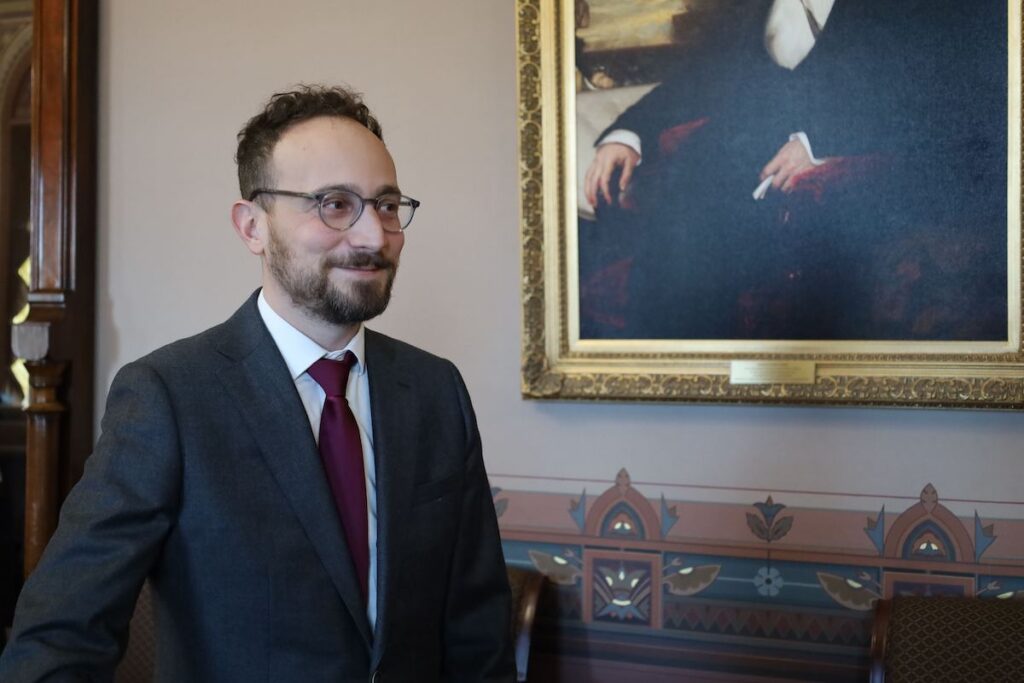
The Department of Education offers a glimmer of hope for those who may have not received funds. They say they plan to continue to identify and discharge more borrowers enrolled in SAVE who are eligible for forgiveness.
Not everyone is optimistic.
Andrew K. Ankamah Jr. graduated from Temple University in May 2023. He currently works in Philadelphia and is the founder and director of an organization named The Accountability Initiative. Like many Americans today, he grapples with the higher cost of living, increased expenses and the looming shadow of student college loan debt.
Ankamah says when he read that student loan debt would be waived under the SAVE plan he logged into his account to see if he qualified.
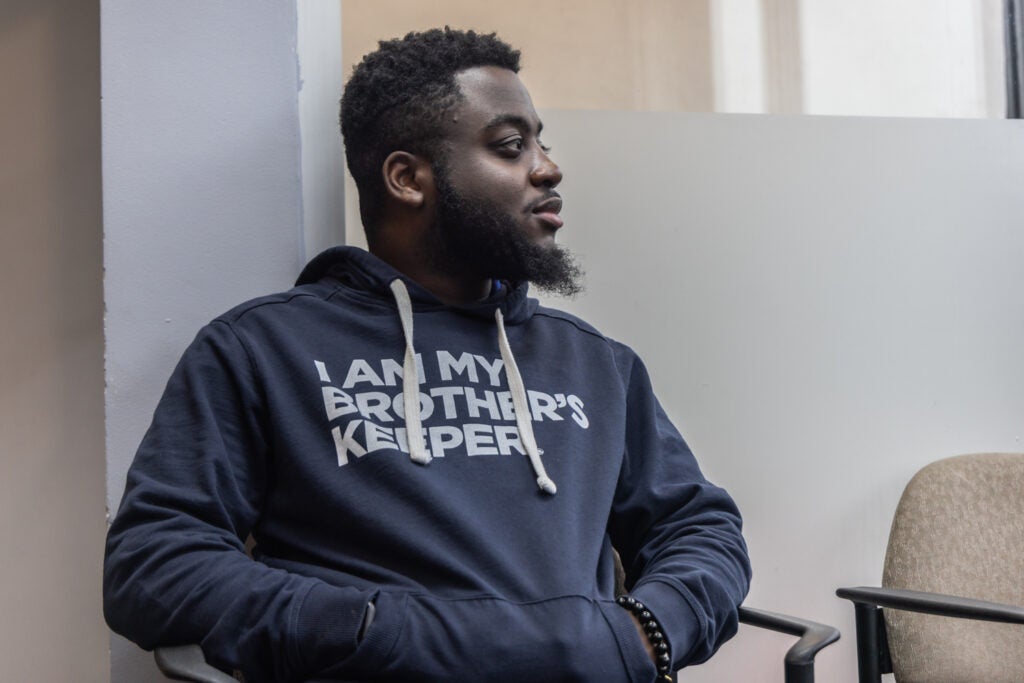
“I was initially excited to see like, Biden is canceling several amounts of loans, but as I read into it, I was like, ‘Oh, I don’t qualify for it,’ said Ankamah, who said he was initially asked to pay $400 a month, but received some reprieve after he enrolled in the SAVE program.
Ankamah now joins the swelling ranks of those who will benefit from reduced or waived payments as part of the plan. While he remains obligated to repay his loans, Ankamah harbors optimism amid the exorbitant cost of living and apprehension over prospective interest rate hikes, envisioning a future where his debt might be absolved.
“I do have hope for the future. Eventually, I will qualify,” said Ankamah.
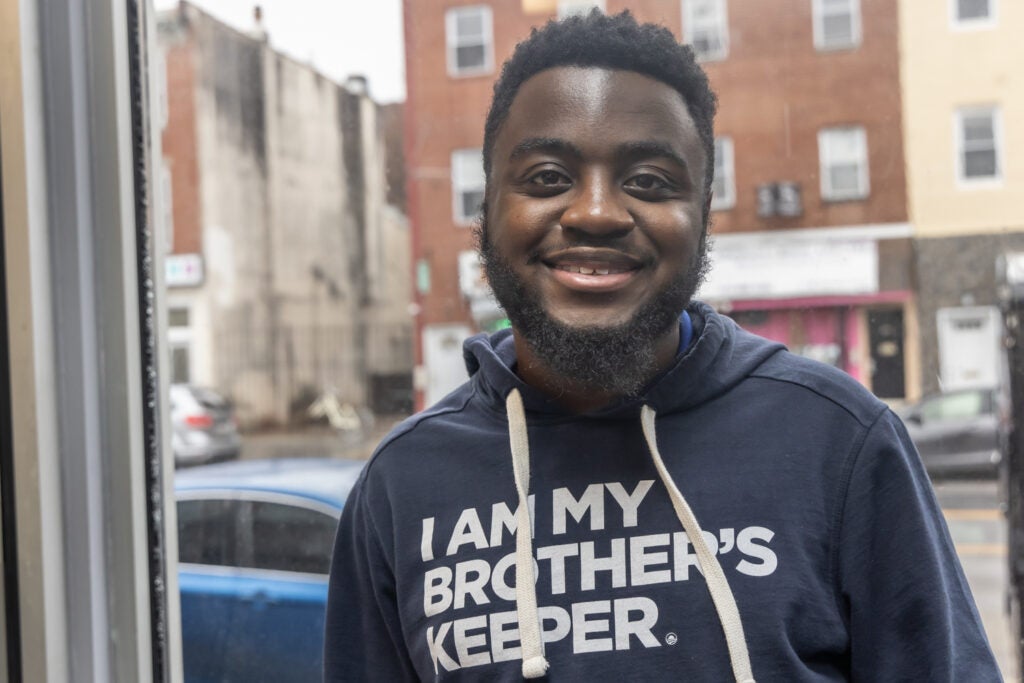
Ankamah, who was fortunate to have his college education funded in part by his parents, worries about the increasing burden of tuition fees and student debt, particularly for Black students. As a mentor and advocate for young Black individuals, he fears that many may be discouraged from pursuing higher education, especially if they are unable to qualify for loan forgiveness, a concern amplified for graduates of Historically Black Colleges and Universities, where tuition costs can exceed $25,000.
“A lot of people, especially in the Black community have more [student debt]than that,” said Ankamah.
Ankamah also said he noticed more of his white counterparts were not riddled with as much debt.
“I know several people who aren’t people of color who don’t have loans at all or have a small amount of loans they have to pay back,” Ankamah Jr. said.
“It kind of makes me think, ‘Are these loan forgiveness aimed at a certain group of people or another?’ I don’t want to think that’s true, but it is a question that comes to mind.”
The Biden administration has unequivocally emphasized that the objective of loan forgiveness is to support all students, with particular attention to students of color, attendees of community colleges and individuals facing financial constraints due to employment.
“It’s an income-based repayment plan. You will pay once you sign up and the amount that you are required to pay is a function of your income,” said Donenberg.
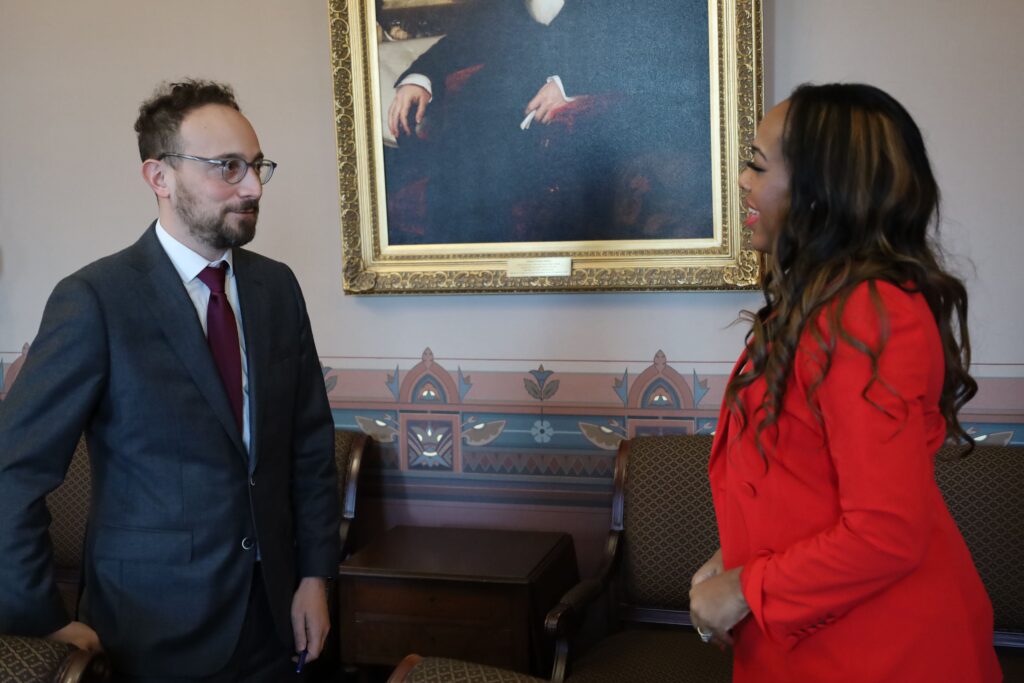
According to Donenberg, the plan comprises several phases and is designed to assist those most in need. He emphasized that even if individuals do not meet the criteria for the latest phase, assistance is still accessible.
“If you are in a low-income job or middle-class income job, you are not going to be required to pay more than 5% for undergraduate loans of your discretionary income, so that’s after you take out expenses for housing and these sorts of things, capped at 5%. And if you make those monthly payments over time eventually the balance of the debt will be forgiven on the back end,” said Doneberg, who noted some people even have zero payments.
City of Philadelphia Democratic Councilmember-At-Large Katherine Gilmore Richardson said that the SAVE plan effectively wiped out her remaining student debt in October.
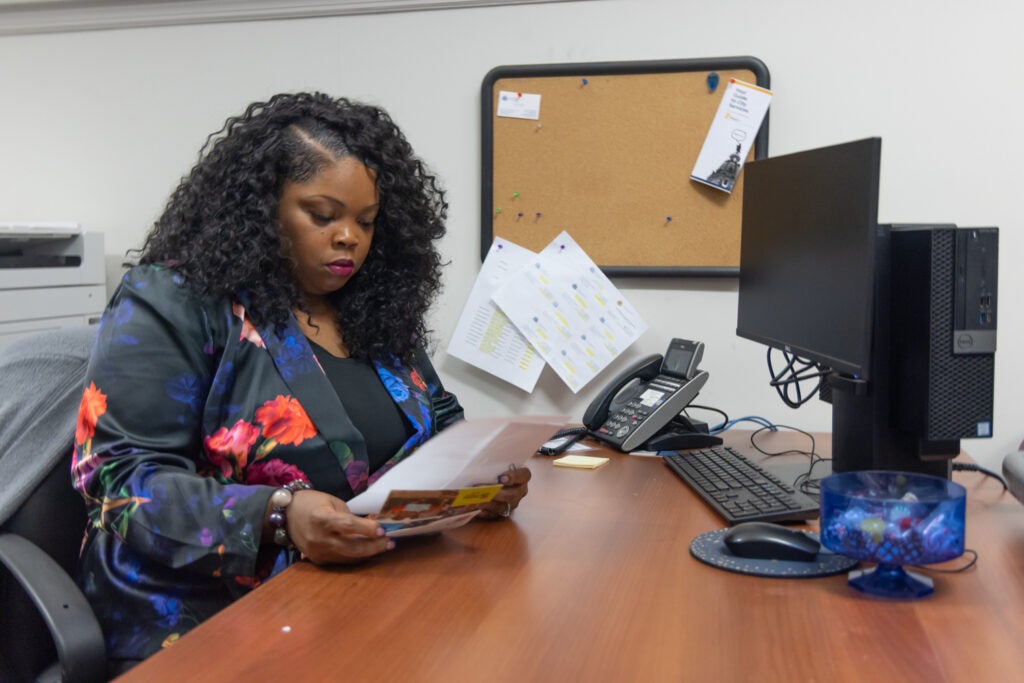
“When I graduated from school I had $58,000 in student loan debt. When my student loans were forgiven, they were at $102,000. People don’t realize with rising interest rates and everything how much they carry in interest, year over year. No matter how much you pay into the plan, you could still be making payments,” Gilmore Richardson said.
“Having the ability to have the loans forgiven helps us to start on a better footing,” explained the council member, who noted the frequently ignored influence of student loans on one’s debt-to-income ratio, and stressed its implications for future financial choices like homeownership, vehicle purchases or other borrowing needs.
“I think this is a great thing not only for our economy but for so many young Americans like me who are starting young families who want to have the American dream [to be able to] purchase their first home and have that picket fence and their vehicle. To start their life with a positive trajectory. So, I’m grateful and thankful to President Biden,” said Gilmore Richardson.

In Philadelphia, a close examination of tuition fees for the 2023-2024 academic year reveals stark differences between private and public universities. The University of Pennsylvania, a prestigious private institution, sets its undergraduate tuition at an average of $58,620. In contrast, Temple University, a public institution, offers a more budget-friendly alternative, with undergraduate tuition ranging up to $24,960.
Adding to the regional landscape, The Community College of Philadelphia emerges as a notably affordable option. For city residents, tuition stands at $4,632, while in-state residents pay $8,688 for the two-year institution.
“We have seen over the past couple semesters a little increase in enrollment which is incredible,” said CCP media specialist Antwon R. Martin.
According to the school’s report, the median total debt for students post-graduation over a two-year period stands at $10,750. This figure starkly contrasts with the debt burdens shouldered by students at four-year universities, where debts can range from $40,000 to $100,000 over the same timeframe.
Dr. Raye Thompson, the executive director of enrollment operations and compliance at CCP, emphasized that students who wish to avoid accruing debt or are unable to afford college can take proactive steps to save money and minimize their future student loan burden.
“So with the low tuition here at a community college, there is definitely a benefit, and any plan that reduces financial burdens for our students and alumni is welcome by the president,” Thompson said.
The White House is determined to sustain its momentum. Presently, the SAVE Plan boasts 7.5 million enrolled borrowers, among whom 4.3 million enjoy a $0 payment status. Efforts will persist in reaching out to borrowers, informing them of their status and extending assistance to eligible but unenrolled individuals.
Learn more about how to apply for forgiveness programs at StudentAid.gov/forgiveness. Borrowers can learn more about the right repayment plan for their financial situation at StudentAid.gov/restart. More information about the SAVE plan is available at StudentAid.gov/save.

Get daily updates from WHYY News!
WHYY is your source for fact-based, in-depth journalism and information. As a nonprofit organization, we rely on financial support from readers like you. Please give today.


